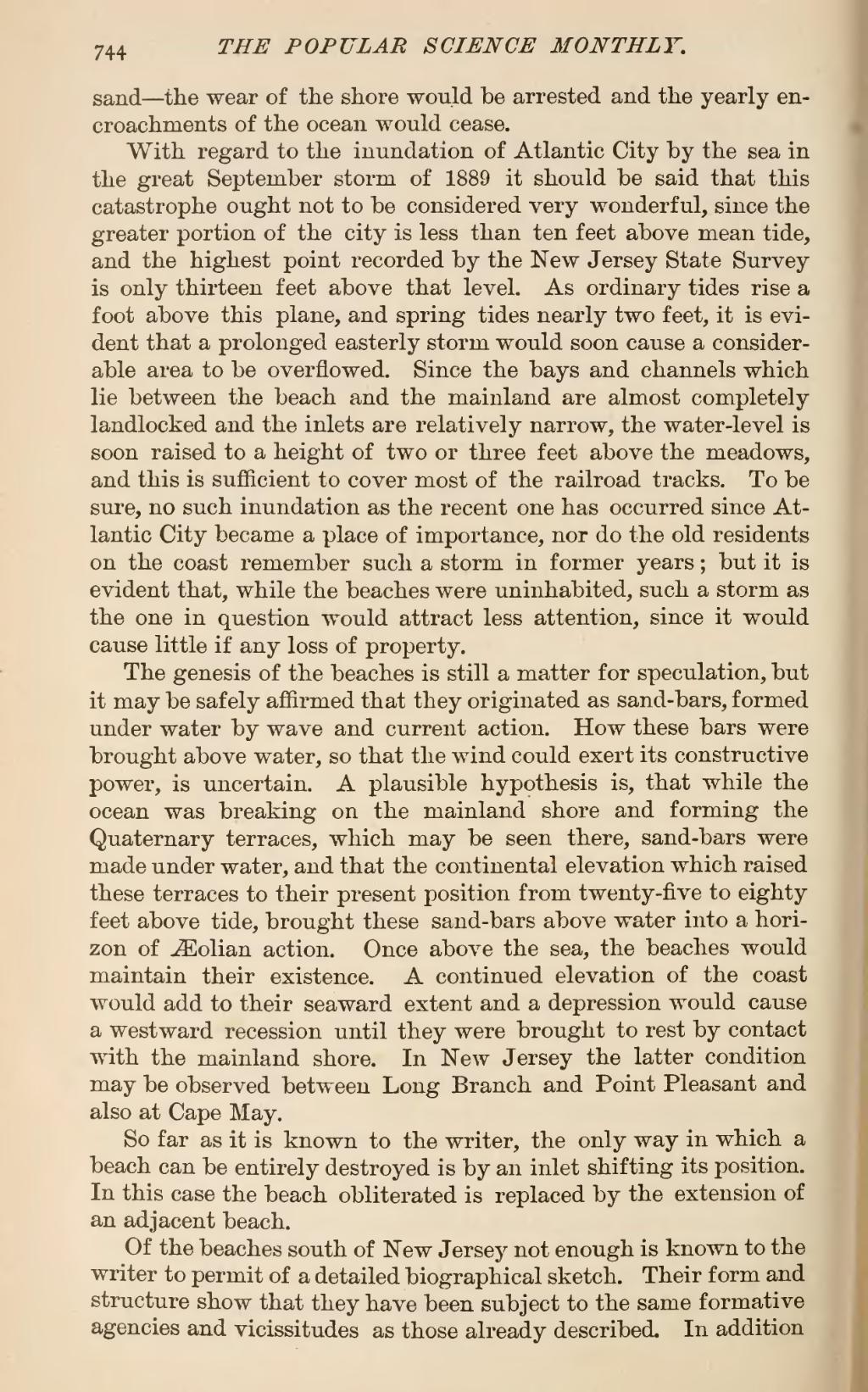sand—the wear of the shore would be arrested and the yearly encroachments of the ocean would cease.
With regard to the inundation of Atlantic City by the sea in the great September storm of 1889 it should be said that this catastrophe ought not to be considered very wonderful, since the greater portion of the city is less than ten feet above mean tide, and the highest point recorded by the New Jersey State Survey is only thirteen feet above that level. As ordinary tides rise a foot above this plane, and spring tides nearly two feet, it is evident that a prolonged easterly storm would soon cause a considerable area to be overflowed. Since the bays and channels which lie between the beach and the mainland are almost completely landlocked and the inlets are relatively narrow, the water-level is soon raised to a height of two or three feet above the meadows, and this is sufficient to cover most of the railroad tracks. To be sure, no such inundation as the recent one has occurred since Atlantic City became a place of importance, nor do the old residents on the coast remember such a storm in former years; but it is evident that, while the beaches were uninhabited, such a storm as the one in question would attract less attention, since it would cause little if any loss of property.
The genesis of the beaches is still a matter for speculation, but it may be safely affirmed that they originated as sand-bars, formed under water by wave and current action. How these bars were brought above water, so that the wind could exert its constructive power, is uncertain. A plausible hypothesis is, that while the ocean was breaking on the mainland shore and forming the Quaternary terraces, which may be seen there, sand-bars were made under water, and that the continental elevation which raised these terraces to their present position from twenty-five to eighty feet above tide, brought these sand-bars above water into a horizon of Æolian action. Once above the sea, the beaches would maintain their existence. A continued elevation of the coast would add to their seaward extent and a depression would cause a westward recession until they were brought to rest by contact with the mainland shore. In New Jersey the latter condition may be observed between Long Branch and Point Pleasant and also at Cape May.
So far as it is known to the writer, the only way in which a beach can be entirely destroyed is by an inlet shifting its position. In this case the beach obliterated is replaced by the extension of an adjacent beach.
Of the beaches south of New Jersey not enough is known to the writer to permit of a detailed biographical sketch. Their form and structure show that they have been subject to the same formative agencies and vicissitudes as those already described. In addition
